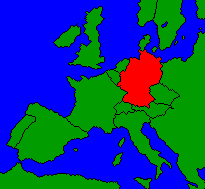

Eighteenth-Century Germany
|
|
This tutorial presents information about three aspects of eighteenth-century German organ-building:
Most undergraduate organ students think of one thing when they hear someone mention eighteenth-century German organs: Johann Sebastian Bach. In fact most organists in the United States concentrate on the music of Bach, and knowing about the instruments he played is an important part of learning how his music sounded when he played it. In a perfect world, we would be able to hop on over to his part of Germany, take a small tour, and listen to each instrument he is known to have played. Of course it isn't that easy. We know about the different instruments, but we don't have a reliable way of relating each and every piece to a specific instrument. Some of the organs don't even exist any longer, and those that are extant have in many cases been altered. We have descriptions, of course, and some of the organs were known and played up until WWII. We can, then, look at what we do know, at what does exist, and we can find out as much as we can about the organs that are no longer in existence. That at least is a beginning, and our own artistic sense must take us the rest of the way. That is the purpose of these pages: to give you a basis for continuing to study and learn about these instruments that hold such importance for us today. I suggest that you read about each organ not as a stand-alone example, but as one part of a puzzle. When you can see how one part fits with another, you begin to see the big picture. As you read a stoplist, then, or as you look at a photograph of a case, think about the place that instrument occupies in the overall history of the organ.
|
© 2000 AD, James H. Cook